Schloss Hof has a great location in Lower Austria in Marchfeld near the border with Slovakia. It is only 30 km from Bratislava and 50 km from Vienna. The palace is a great option for a short day trip. It has a big baroque garden spreading over 70 hectares over the country. The palace belongs to the biggest baroque complexes of this type in Europe.
Besides historic interiors, art collections, and gardens, the palace also offers exhibits, workshops, winter markets, cultural events, and educational programs.
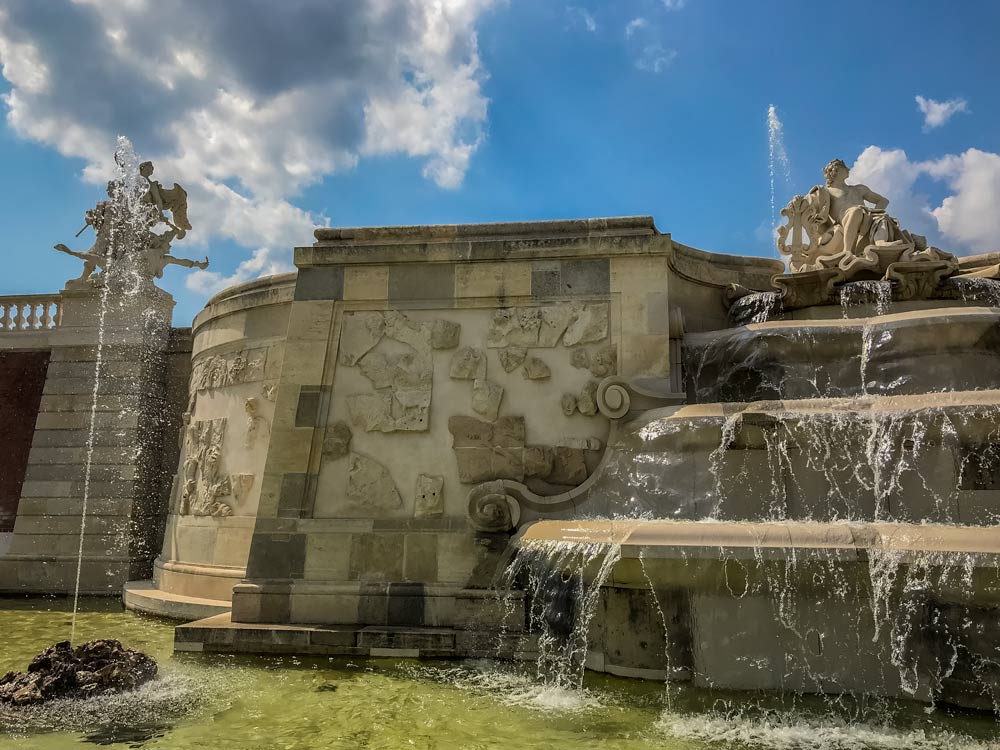

How to get there
There are a couple of biking routes that you can try to reach the palace. When you are coming from Slovakia, the best one is through the Freedom Cycle Bridge from Devínska Nová Ves. Before boarding the bridge, you will pass one small bunker with short information on the table. There are many of them along the border up to the Czechia. After crossing the Morava River there is a straight road with a view of the palace in the distance. If you decide to walk and use public transport, then go with bus number 29 from SNP bridge and get off at Na Grbe, or Uhrovecká bus stop.
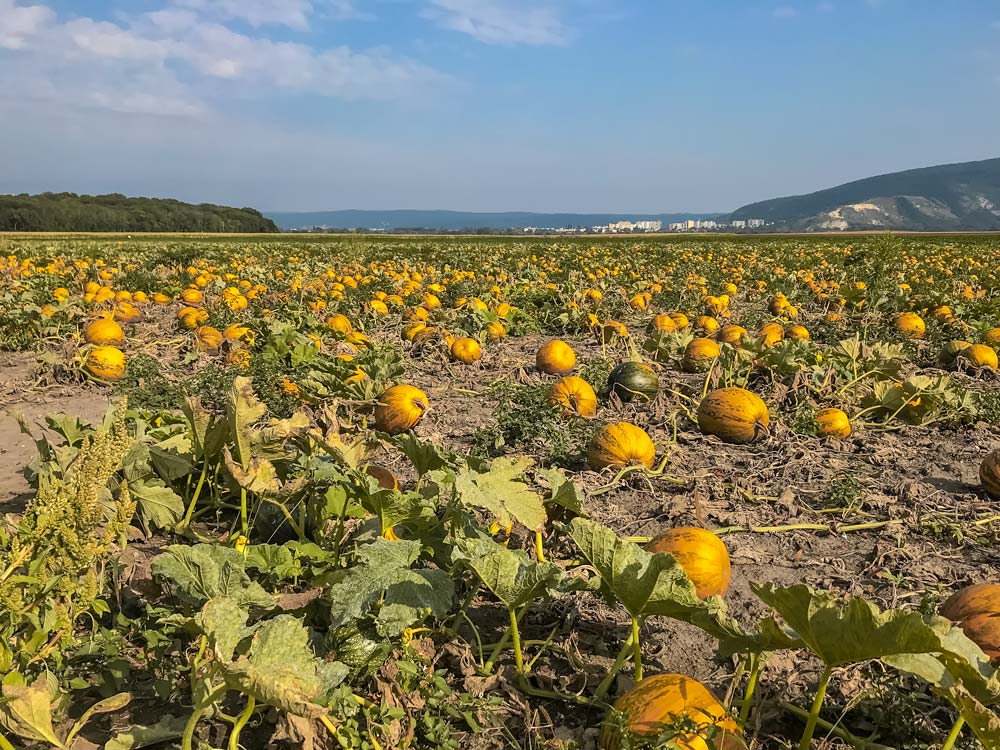
When reaching the palace from with public transport (regional train S7) from the Austrian side, you can take your bike to Marchegg station and then continue on the wheels to the Schloss Hof. You can also rent a bike at the palace or in the Marchegg.

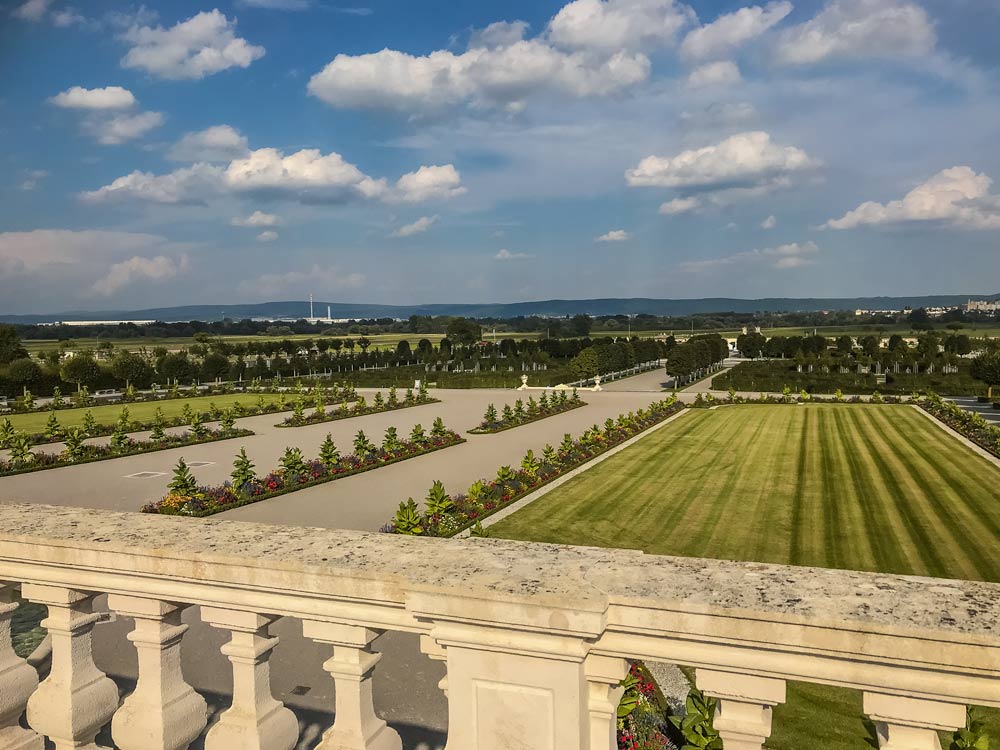
Historical background
People built Schloss Hof palace in the 18th century for Prince Eugene of Savoy. Its designer was renowned Baroque architect Johan Lucas von Hildebrandt. Prince Eugene used it as a summer residence and hunting lodge. He was a prominent figure in victories against the Ottoman Empire.
After his death, Maria Theresa bought the palace in 1755. She decided to expand it. Nikolaus Pacassi became its architect and was responsible for the redesign.
Later during the 19th and early 20th century it was on the decline, used less frequently, and mostly neglected.
Restorative works began in the second half of the 20th century, mostly in the 1990s, and 2000s. It opened to the public again in 2002.
The region including the palace is considered for UNESCO World Heritage status due to its historical and architectural significance.
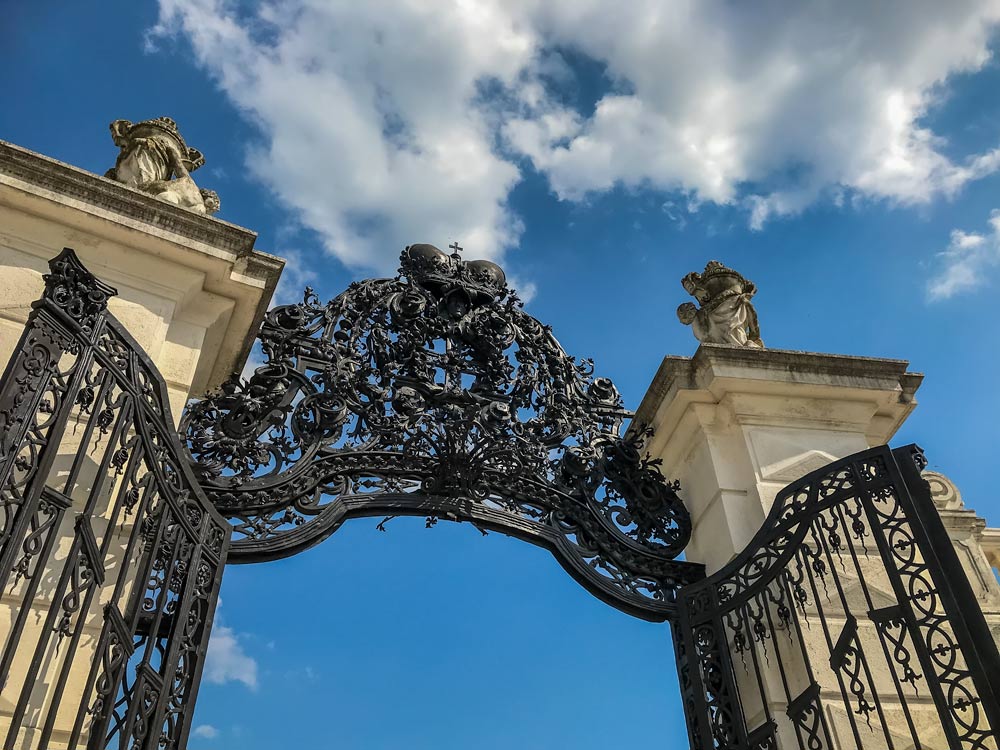
Architecture and Design
The above paragraphs mention the names of the designers and architects. Johann Lucas was also responsible for other baroque works in the country, such as Belvedere Palace. The latter one N. Pacassi is the architect of the Hofburg Palace.
Schloss Hof exemplifies Baroque style, characterized by grandeur, symmetry, and elaborate details.
The architectural features include the main palace building. It has three stores with a central courtyard. The facade has Baroque elements such as stucco decorations, pilasters, or cornices.
The staircase is another significant feature that leads to the apartments. It has intricate railings and frescoes. And then there are the state apartments with lavishly decorated rooms. You can adore stucco ceilings, ornate furniture, and tapestries. The main highlight is the Marble Hall.
When exploring the outside, you will also find the orangery and outbuildings. The orangery is used mostly for housing rare plants during the winter. Other buildings include stables and the ZOO.
Be aware that inside the apartments it is not allowed to take pictures. You can also book a room – there are Gasthof Prinz Eugen apartments for those who want to enjoy the summer residence and the peace of the countryside for longer.
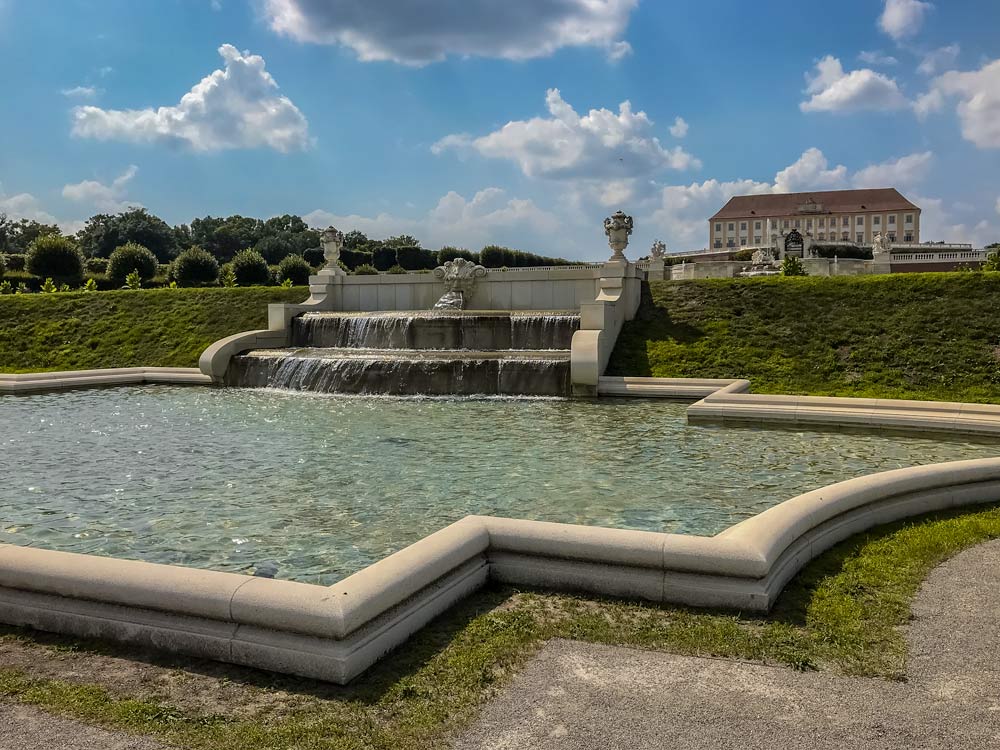
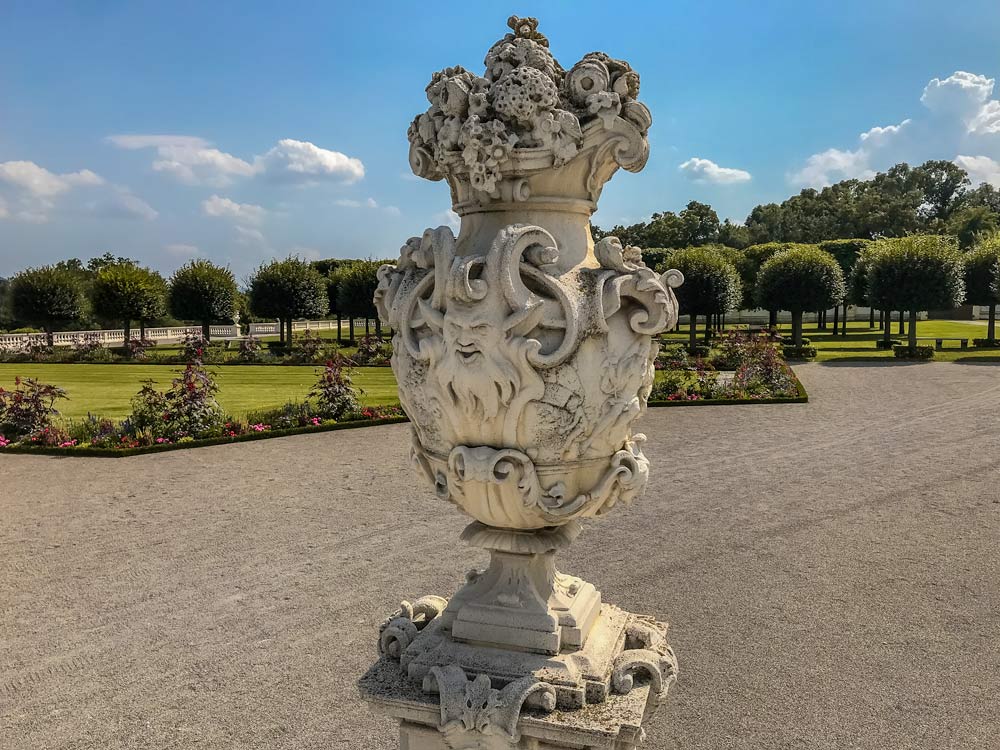

Gardens
The gardens reflect the same Baroque style as the palace. There are seven terraces, each with distinct themes and features. A grand staircase and pathways connect all of them. Each terrace has unique elements, such as flower beds, sculptures, or water features.
The main parterre lies right in front of the palace. It has beautifully designed flower beds with geometric patterns, and clipped hedges lining both sides.
The gardens feature numerous sculptures and fountains, the most notable of which is the Neptune Fountain. At its center stands the God Neptune, surrounded by mythical creatures.
One of the terraces is a herb garden featuring many medical and culinary plants.
Lower terraces offer brocaded flower beds planted in a way that creates intricate patterns and designs. They tend to be seasonal and showcase different flowers throughout the year.
The garden includes sections for fruit orchards and vineyards, designed with aesthetic considerations.
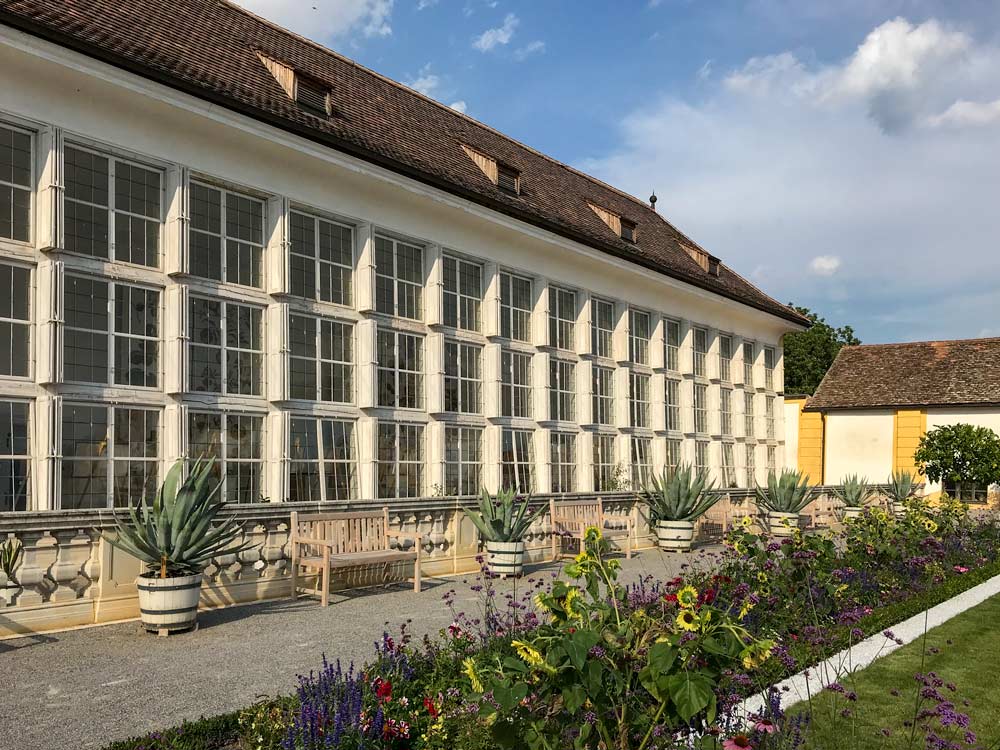

Interiors
I have already mentioned the staterooms and apartments. Besides the Marble Hall, there is also the Banquet Hall, which was used for formal dining and state banquets.
Private apartments include the Prince Eugene’s Suite, Maria Theresa Suite, reception rooms (audience room, council chamber), chapel, library, ballroom, salon room (blue and read salon), and gallery room. Some rooms have been turned into museum spaces. They offer historical artifacts or documents.
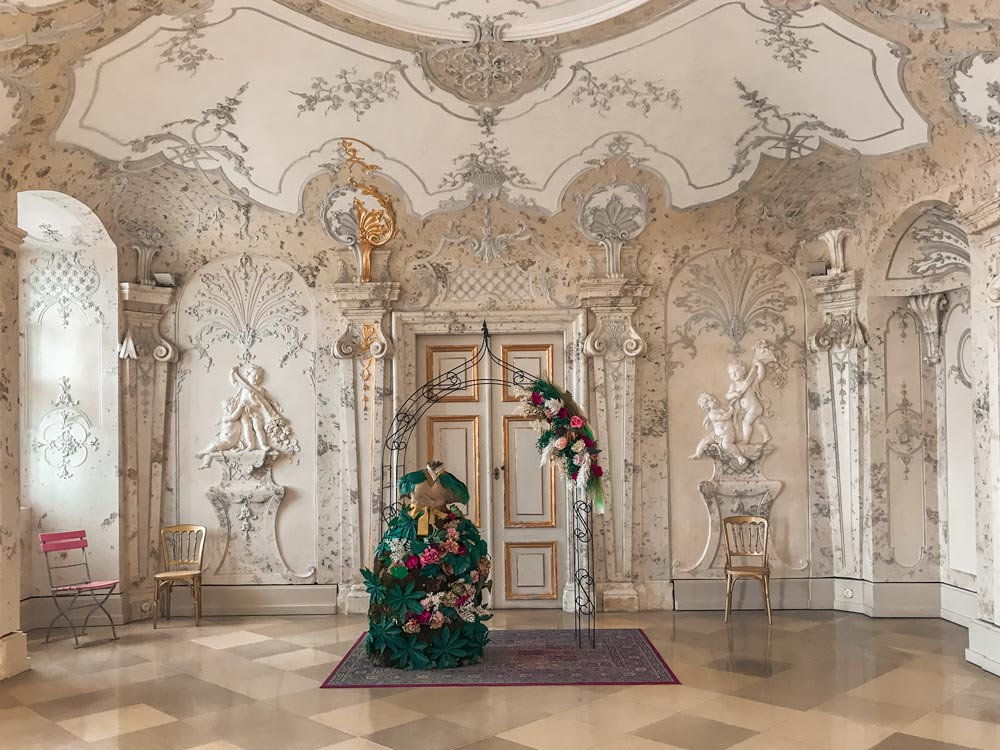
Zoo
The zoo is from the 18th century and was part of the Prince Eugene estate. It mostly featured exotic animals that served as a symbol of wealth and prestige.
The zoo is a family-friendly attraction and houses rare and endangered breeds (Austrian Noriker horse, Turopolje pigs, Carinthian Blond cattle). There are also many traditional animals such as goats, sheep, rabbits, and birds. Visitors can touch, pet, and feed the animals.
The place has a separate area for the farm and the stables for larger animals.
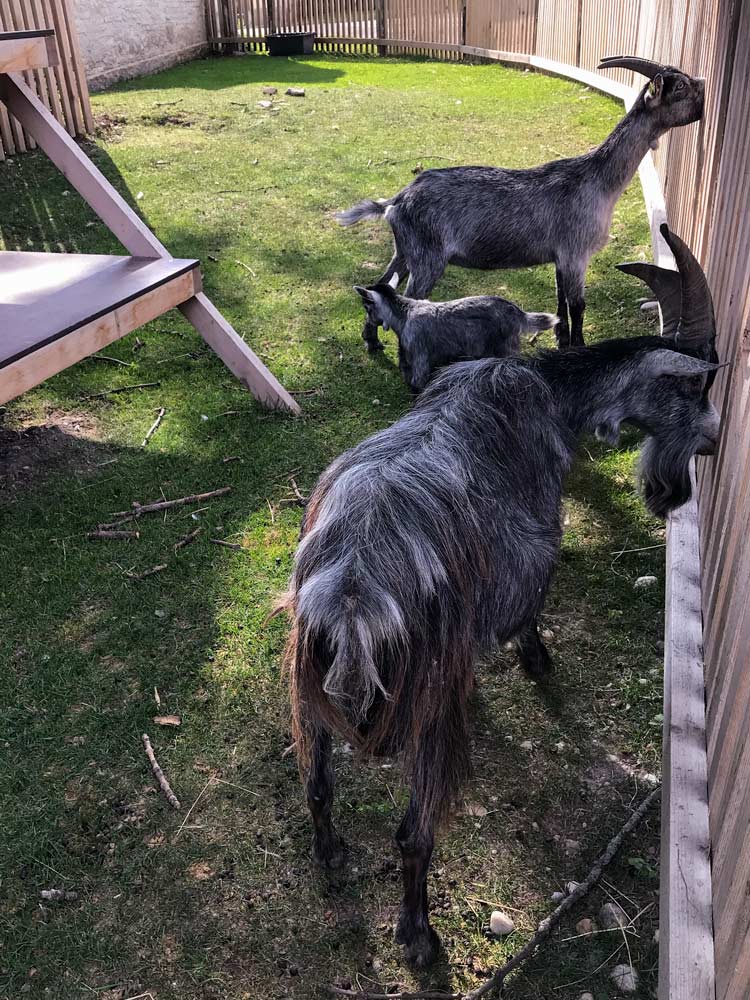
Nearby Niederweiden Schloss
Niederweiden is a small palace only 3 km away. The entrance is usually included in the ticket for the Schloss Hof, but you do not need to visit both on the same day.
You can easily reach it from the Schloss Hof by car (5-min ride), bike, or foot (30-40 min long).
During the peak tourist season or special events, a shuttle bus service operates between those palaces.
Its history dates back to the 18th century when Prince Eugene used it as a hunting lodge. Similarly to Schloss Hof, this one was built in Baroque style but with more intimate and rustic charm.
Inside the palace are rooms with decorations such as frescoes, stucco work, and period furnishings. Outside is a small Baroque garden featuring formal layouts, statues, and fountains.
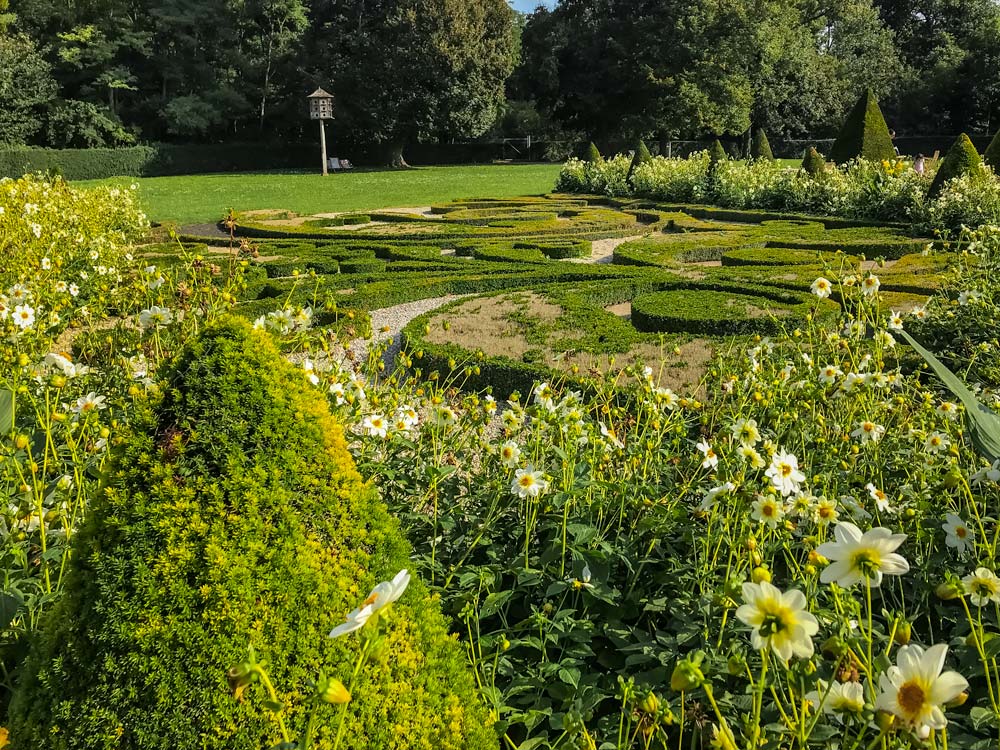
Compared to Schloss Hof, Niederweiden Schloss is relatively smaller, with tours typically lasting about half an hour. During my visit, there was an additional exhibition, which required a separate ticket, that I chose not to visit. Overall, it’s advisable to visit both palaces in one day, starting with Niederweiden Schloss. This approach ensures you have enough time and energy, especially on hot summer days, to fully appreciate the larger Schloss Hof.
Sources:
Wikipedia,
schlosshof.at